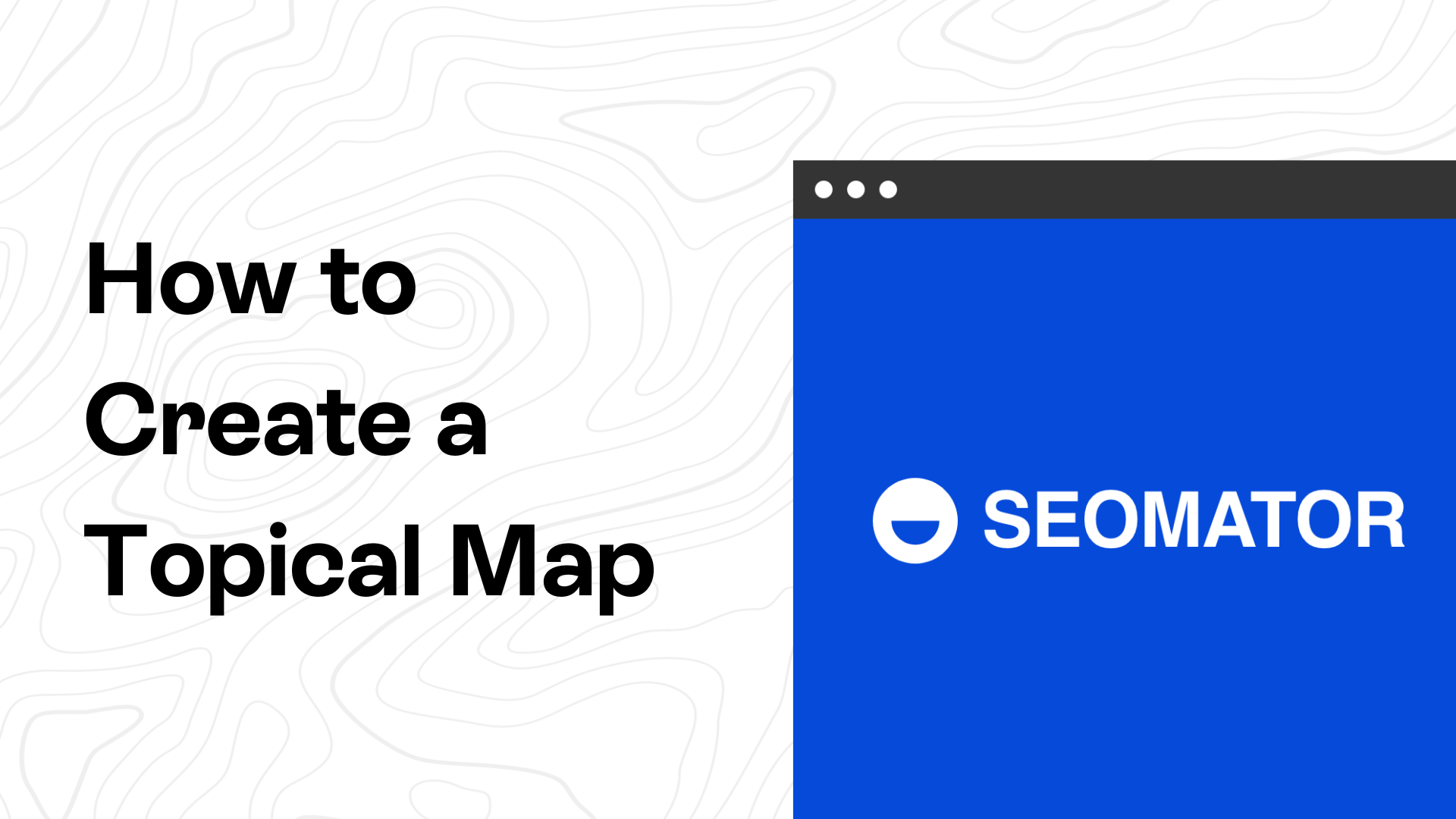
Dealing with search engine optimization is nothing less than playing a strategic game. So now, let's enter the first level of this game: Keyword Research.
After all, the journey of a thousand clicks begins with a single keyword!
But before delving into keyword research progress, let’s discuss what is a structured SEO plan.
What is A Structured SEO Plan?
In the context of SEO (Search Engine Optimization), a structured SEO plan is a strategic blueprint outlining the steps, tactics, and methodologies used to enhance a website's visibility and ranking on search engine results pages (SERPs).
It encompasses various elements tailored to improve a website's performance and increase its organic traffic.

A comprehensive structured SEO plan typically includes the following components:
- Keyword Research and Analysis: Identifying relevant keywords and phrases that your target audience uses when searching for products, services, or information related to your business.
- On-Page Optimization: Optimizing individual web pages to improve their relevance to selected keywords. This includes optimizing meta tags, content, headings, URL structures, and internal linking.
- Content Strategy: Developing high-quality, engaging, and valuable content that satisfies user intent and incorporates targeted keywords naturally. This can include blog posts, articles, videos, infographics, etc.
- Technical SEO: Ensuring the website's technical elements are optimized for search engines, such as improving site speed, fixing crawl errors, optimizing for mobile devices, and implementing structured data markup.
- Off-Page Optimization: Building a strong backlink profile through strategies like guest posting, influencer outreach, and social media engagement to increase the website's authority and credibility.
- Monitoring and Analysis: Tracking and analyzing key performance metrics using tools like Google Analytics or other SEO software. This involves monitoring keyword rankings, organic traffic, user behavior, and conversions to assess the effectiveness of the SEO efforts.
Adjustments and Iterations: Based on the analysis, making necessary adjustments and refinements to the SEO strategy to improve performance continually. SEO is an ongoing process that requires adaptation to algorithm changes and shifts in user behavior.
By implementing a structured SEO plan that covers these aspects, businesses can enhance their online visibility, attract more qualified traffic, and ultimately improve their website's overall performance in search engine rankings.
Now, we’re good to go to explore keyword research progress.
The First Step of A Structured SEO Plan: Keyword Research
This vital first step of a structured SEO plan is often like finding a needle in a haystack, but when done right, it can be a game-changer for your website!
Imagine SEO as a connect-the-dots puzzle where you want to secure a spot in the top tier of Google's search result pages. The dots in this puzzle are your potential audience, and the lines that connect these dots represent the search terms or phrases they type into a search box, i.e., the keywords.
Keywords are crucial because they serve as the medium via which users connect to your content.
When a user seeks information and starts typing terms into Google’s search box, the engine will provide results closely related to the words typed in, and voila, that’s where your keyword-optimized content has a chance to shine!
So basically, keyword research is about understanding the language of your potential visitors and how they express what they’re looking for.
How to Find Keywords with Tools
There are several tools available to aid your keyword research process. Google Keyword Planner, SEOmator, Ubersuggest, Ahrefs just to name a few. These are specially designed SEO tools that yield a wealth of keyword suggestions in your niche area.
Utilizing these tools could be compared to being handed a magnifying glass in a 'Where’s Wally' puzzle – keywords that may have been hidden before, now stand out, ready to be included in your SEO plan!
You can easily use SEOmator’s Keyword Research Tool, which is free unlike other premium SEO tools, to find keywords and phrases that will help you reach your target audience.
Here are the guide to find the best keywords for your structured SEO plan:
1. Go to SEOmator’s Free Keyword Research Tool.

2. Enter a keyword and click Submit.

3. The tool will provide you with a list of keyword ideas, including CPC and search volume information.

How to Select Keywords
It’s not just enough to have a long list of all possible keywords! The significant part is in selecting the right keywords to target. Two main factors should influence your decision: search volume and relevance.
Search volume is presented as an approximate monthly average of how many times people have searched for a specific keyword. Aim for a balance – if the volume is too low, fewer potential visitors; if it’s too high, it could signal highly competitive keywords.
On the other side of the spectrum is relevance. The chosen keywords should be highly tied to the content of your website or the services you offer. Above all, your selected keywords should match with the queries and interests of your target audience.
🔎You may want to read: How to Find Niche Keywords in 7 Steps
How to Check Keyword Competitiveness/Difficulty
The final layer in finding the best keywords is checking their competitiveness or difficulty. Selecting keywords with a high volume and relevance can be futile if those are too competitive. You’ll be trying to climb Everest in flip-flops!
Competitive keywords are those for which numerous established sites have already been optimized. For a newcomer or a smaller site, you stand a little chance of ranking higher for these words. So, lower competitive keywords can be better to aim at.
Keyword tools usually provide this difficulty score. Keywords with less competition are deemed as opportunities you should grasp. The lower the keyword difficulty, the higher your chances to rank on Google!
👉Evaluate the competitiveness of your target keywords
How to Optimize Content to Align with Keywords
While content is king, keyword is queen. Since the first step of your SEO plan revolves around keywords, your content must be tailored around them.
Perform these actions to optimize your content:
📌Meta Tags: Ensure your title tag and meta description includes your primary keyword. Remember to keep within the permitted character length.
👉Analyze your website’s meta tags
📌URL Structure: The URL of your page should ideally include your target keyword and be user-readable.
📌Keyword Density: Make sure your primary keyword is present but doesn't sound forced or overused. A good rule of thumb is to maintain keyword density around 1-2%.
👉Calculate the keyword density of any web page
📌Use Long-Tail Keywords: These are extended phrases that visitors use in search engines. Since they're more specific, they can attract highly targeted traffic.
Keep in mind that the aim is not to stuff your content with keywords but to incorporate them thoughtfully and maintain natural readability.
🔎You may want to read: Understanding How Many Keywords to Use Per Page for SEO

How to Assess and Improve Old Content
Refreshing content keeps it relevant and valuable for your users. It helps you incorporate new keywords, boost your SEO, and ensures your brand stays fresh and current in the minds of your audience. In short, it's a win-win!
Here's how you can refresh your old content effectively:
🎯Update Outdated Information: Sometimes, data, stats, trends, and even opinions can change. Make sure your content reflects these changes to stay valid.
🎯Plug in New Keywords: SEO is a dynamic field, and new keywords can crop up. Use these opportunities to update your content with newer, trending keywords.
🎯Improve Readability: Making your content easier to read and more engaging can instantly boost its effectiveness.
🎯Add Fresh Images or Multimedia: Adding new images, infographics, videos, or diagrams can make your content more engaging and shareable.
🎯Link to Recent Content: Interlinking with more recent blogs or articles can keep your content updated and increase dwell time on your site.
🔎You may also want to read: The Benefits of Creating and Distributing High-Quality Content
So, all you master chefs of the content kitchen, get ready to start creating content that not only tastes good to your readers but also looks appetizing to the Google-bot's palate!
Conclusion
Knowing what should be the first step of a structured SEO plan is the key to amplifying our chances of success. A well begun task is half the task done!
In this case, the first vital step of a structured SEO plan should be keyword research. Consider keyword research like clearing the dust off a treasure chest. It allows you to find those valuable terms that make your content shine on the SERPs.
Rome wasn't built in a day, and neither is your online presence. It's the result of meticulous planning and careful execution, which all begins with that all-important first step: Keyword research!
🔎Related Articles:
- Branded vs. Non-Branded Keywords: Must Know Things
- How to Search Keywords on a Website
- Different Types of Keywords with Real-Life Examples for SEO





